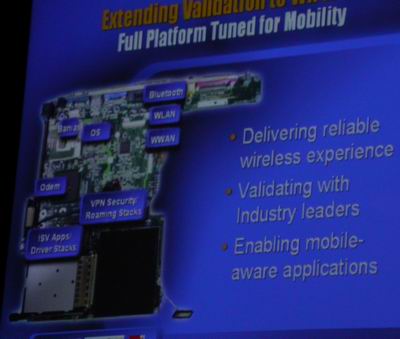Intel Developer Forum Fall 2002 - Day 2: Banias Galore
by Anand Lal Shimpi on September 10, 2002 2:12 PM EST- Posted in
- Trade Shows
Banias will target the portability segment where battery life, small size and good performance are major selling points. The Pentium 4-M will address the mobility segment or basically the desktop replacement market, indicating that the Pentium 4-M will continue to have a performance advantage over Banias. It is clear that Banias is noticeably faster than the current Pentium III-M processors.
The only benchmark Intel ran on Banias was a MPEG-4 encoding test using DiVX; the settings in Xmpeg weren’t too clear but it seemed to be running at 640x480 or 720x480 at the fastest encoding setting with audio processing disabled. The Banias test platform was consistently getting around 30 fps which was decent but the most impressive part of the demo was its power consumption while running the test – 7W. After the encoding was completed the CPU went back down to using under 1W of power; keeping in mind that Banias is supposed to enable notebooks with an 8 hour battery life, this may just make it happen.

A Banias Motherboard
Intel also introduced a new chipset for Banias in addition to Odem, which was announced at IDF 6 months ago. The new chipset is called Montara-GM and its name indicates that it may be an integrated graphics version of the Odem chipset. Intel also confirmed today that the platforms will have support for both 802.11a and 802.11b; through a combination of software and hardware support, the integrated wireless will be optimized for low power consumption by automatically putting the radio to sleep when not in use.

Samsung's Banias notebook

A Banias tablet
Final Words
Today was definitely all about Banias and we hope you enjoyed the coverage;
now it’s back to the show.











0 Comments
View All Comments